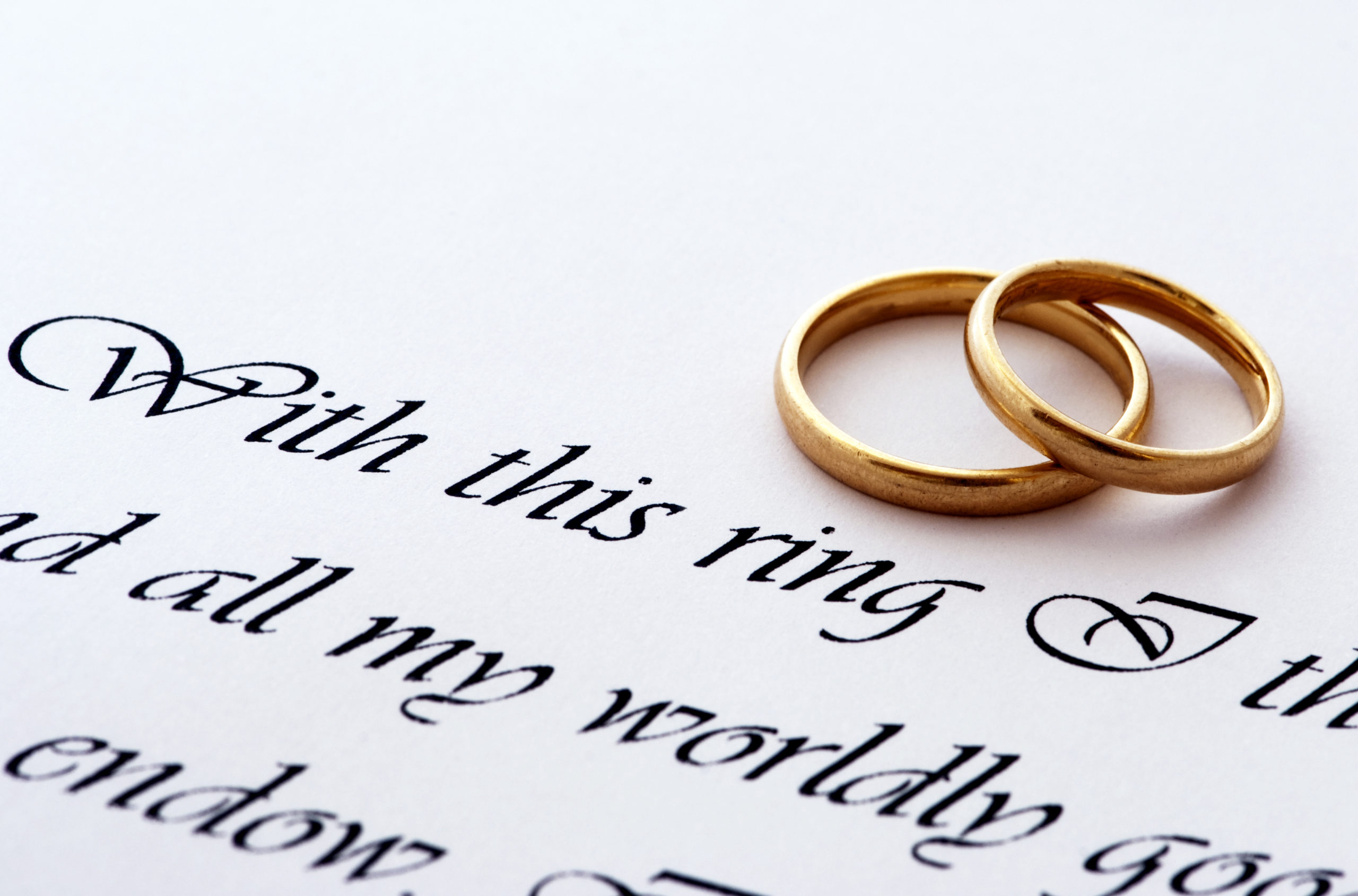• The exchange of gold rings symbolizes fidelity and a binding of hearts to one another. Gold is one of the most precious metal known to man. The ring is hard and unbreakable. It is a perfect circle and thus represents a never-ending, eternal commitment. We wear it on the third finger of our left hand. Why? It was believed that the vein in the third finger ran directly to the heart, so the wearing of the rings on that finger joined the couple’s hearts and destinies. Because of the hand heart connection, that vein was named Vena amori, Latin for “the vein of love.” (Feminists today are purposely wearing their ring on their right hand to symbolize commitment to no one but themselves.)
• Diamonds or jewels of any kind symbolize strength, durability, resistance to abrasion, and steadfastness. The diamond is the most durable of all the stones and has the greatest resistance to abrasion. Hence, the slogan: A diamond is forever. The ruby is second and the sapphire is third. The weakest stone is the opal.
• The white aisle runner symbolizes walking on holy ground. A marriage is made in the presence of God. The white runner symbolizes God’s holiness.
• The throwing of rice or petals symbolizes the onlooker’s wishes for the couple to have great happiness and prosperity.
• The display of flowers has always been for fragrance and beauty, but some were chosen because they were synonymous with certain values or ideals and could be used by her to reflect what she valued most in their relationship. Some flowers were included because they were considered aphrodisiacs and encouraged fertility for the bearing of children. For example, the red rose—love; the pink rose—affection, lilies—Jesus, purity, faithfulness, etc. Greenery of any kind also symbolizes fertility or new life.
• The feeding of the wedding cake to one another and the drinking of the juice symbolizes the sharing of their bodies to become one. A New Testament illustration of this is the Lord’s Supper.
• The descending of the bride from her chamber down an aisle is a picture of the holy city, the bride of Christ, descending to Him.
• The wearing of blue represents purity and fidelity. It stems back to what the priests wore on their garments when entering the temple.
• The best man is the friend of the bridegroom who rejoices with the groom; he represents those who witness to others the message of Christ; often the best man was responsible for getting the bride and the groom together.
• The unity candle symbolizes the joining of their lives to become one flesh.
• Having the bride on the left and the groom on the right was a protection for the bride. Most men are right-handed, which meant he could guard her with his left arm while wielding his sword with his right in case of an emergency.
• The father of the bride walks her down the aisle because he has been her protector and provider. He gives her to her groom as both a symbol of his approval of the marriage and willingness to trust the groom enough to transfer responsibility of his daughter to him.
This series is an excerpt from Mrs. Hooker’s book Your Body Is Not Your Own Volume 1.

